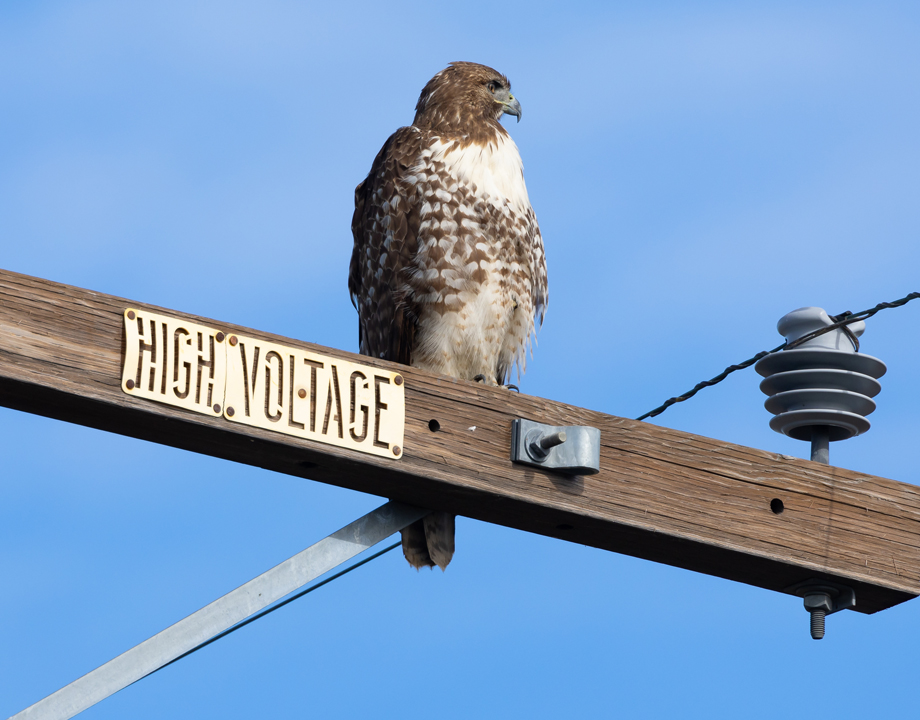How Food Webs May Improve Electric Grids
How Food Webs May Improve Electric Grids


The resiliency of natural food webs could be imitated in a redesign of electric grids.
Hawks don’t starve when their favorite food disappears. They can eat snakes and frogs and mice, among other little animals, and those prey, too, have many meal options. This is what makes a food web resilient to environmental disturbances like droughts and floods.
If only our aging power grids, so fragile in the face of storms, earthquakes, and other incarnations of disaster, could be so smart.
Astrid Layton, a professor of mechanical engineering at Texas A&M University and director of the Bio-inspired Systems Lab, thinks our grids can be made just as resilient as nature’s food webs, by imitating them.
Listen to our Podcast: Hydro and the Electric Grid
“If you think about an ecosystem, the species individually want to survive,” she said. “They're focused on themselves, making decisions for themselves. And, despite that, when disturbances happen, the overall ecosystem also survives. This is the design that has survived out of all those millions of years of R&D. So there’s something to learn here related to survival and resilience and how to do that effectively.”
In her paper, “An Ecological Robustness Oriented Optimal Power Flow for Power Systems’ Survivability,” which appeared in IEEE Transactions on Power Systems this spring, she and her collaborator, Katherine Davis, a professor of electrical and computer engineering at Texas A&M, outline just what a power grid modeled on a food web would look like and why it would be more robust.
Our grids need to be tough in the face of calamity but also cost effective. Striking a balance between building resilience into a system while minimizing the expenditure of unnecessary resources is exactly what nature does with aplomb.
“These long surviving food webs cluster around patterns of system behavior that survive unexpected disturbances; not only survive, but also continue to grow and develop when things are good,” said Layton. “This is pretty similar to what we want in our human engineered systems, right? We want to make sure the resilience modifications that we apply to the grid are going to be beneficial during storms and then also successful, and not a burden, during normal operations.”
Ecologists call this sweet spot of redundancy versus efficiency the “window of vitality.” On a spectrum with perfect efficiency on one side and perfect redundancy on the other, this window is not smack in the middle.
“It favors the redundant side of things, but it doesn’t go to extreme redundancy,” said Layton. “We’re finding that this ecological window of vitality is very good at narrowing down to network designs that are more likely to survive unexpected disturbances.”
What do Layton’s food web inspired grids look like?
Become a Member: Sign Up for ASME
“In some cases, more lines are being added,” she said. “In some cases, the lines are being rearranged. And then, in some cases, the amount flowing across those lines is being rearranged. In most cases, some form of all three of those things is happening.”
Sometimes those scenarios cost slightly more than traditional grid designs, but Layton has shown that the benefits far outweigh the costs. Her ecologically rewired grid models outperformed traditional grids in simulations of disturbances. She and her collaborators ran those simulations on grids with as few as 24 buses—the nodes that redistribute power—to as many as 500. Across the board, the ecological inspired grids had fewer outages when mock-disaster hit. A 118-bus system, for example, saw a 90% reduction in violation.
“If you’re solely focused on minimizing cost, you’re gonna put in as few buses and lines as possible, right? Suddenly, if a storm comes through, and a bus goes out, you have a huge issue with getting power to where it needs to go,” explained Layton. “So now, maybe it makes sense to have two buses. And if there are already two buses there, this redesign that we’re talking about says, ‘OK, let’s play around with how many customers you have connected to each.’”
More for You: Three Charts about the Electric Grid
This ecological approach could be used in many network types that could profit from optimal redundancy. Layton already has investigated water networks, supply chains, and industrial resource networks.
But right now she’s hoping to help our power distribution, which is sorely in need of assistance.
“Most of the U.S. grid is very old and in a lot of places it’s actually overextended its initial design lifetime,” she said. “We’re introducing something that can help redesign existing networks. We’re saying, ‘Hey, there’s this network existing. How do we improve the existing network?’”
Michael Abrams is a science and technology writer in Westfield, N.J.



